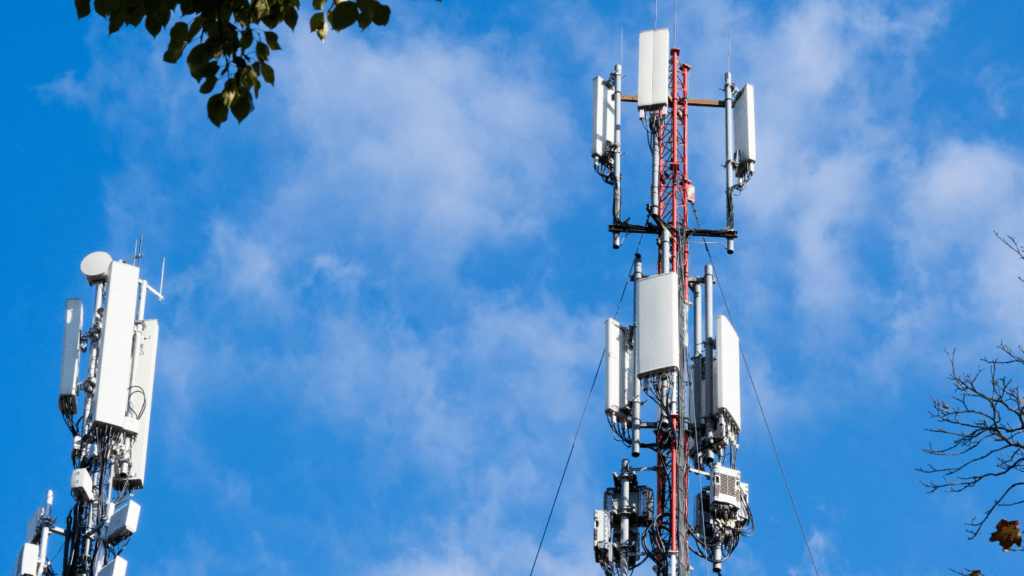In today’s rapidly evolving digital landscape, the convergence of Artificial Intelligence (AI) and 5G networks is reshaping the way we interact with technology. As an expert in the field, I’ve witnessed firsthand the transformative power of AI when combined with the lightning-fast speeds and low latency of 5G connectivity. This synergy between AI and 5G is not just a trend; it’s a technological revolution that is propelling us into a future where smart devices communicate seamlessly, autonomous vehicles navigate effortlessly, and industries optimize operations like never before.
The fusion of AI and 5G networks holds immense potential to revolutionize industries, drive innovation, and enhance user experiences. As I delve deeper into this intersection in the upcoming article, I’ll explore the unprecedented opportunities and challenges that arise when these two cutting-edge technologies converge. Stay tuned as we unravel the intricate dance between AI and 5G networks, shaping the digital landscape of tomorrow.
The Impact of AI on 5G Networks
Exploring the influence of Artificial Intelligence (AI) on 5G networks reveals a profound transformation in the digital realm. Combining the capabilities of AI with the efficiency of 5G networks opens up a world of unprecedented opportunities for innovation and connectivity. One of the key advantages of AI integration is its ability to enhance network performance by predicting user behavior, optimizing bandwidth allocation, and ensuring seamless connectivity across a myriad of devices.
AI-driven algorithms can dynamically adjust network parameters in real-time, adapting to changing conditions and user requirements. This adaptability results in improved network reliability, reduced latency, and enhanced overall user experience. By leveraging AI-powered analytics, network operators can gain valuable insights into network traffic patterns, enabling them to proactively address potential bottlenecks and optimize resource utilization.
Moreover, AI plays a crucial role in network security within the 5G ecosystem. Its ability to detect and mitigate cybersecurity threats in real-time enhances the integrity and resilience of 5G networks, safeguarding sensitive data and ensuring uninterrupted service delivery. AI-powered security measures can identify abnormal network behavior, prevent unauthorized access, and respond swiftly to emerging threats, bolstering the overall security posture of 5G infrastructure.
The integration of AI with 5G networks represents a paradigm shift in the way networks are managed, optimized, and secured. By harnessing the power of AI, organizations can unlock the full potential of 5G technology, driving innovation, efficiency, and reliability in the digital landscape. This transformative synergy paves the way for a future where intelligent networks seamlessly adapt to user needs, deliver superior performance, and set new standards for connectivity in the era of digital transformation.
Enhancements in Network Performance
Optimizing Network Slicing with AI
I leverage AI for enhancing network slicing capabilities by dynamically allocating resources based on real-time demands. It’s crucial in ensuring optimal service delivery for diverse applications and services that require varying network characteristics. By utilizing AI algorithms to analyze traffic patterns and user requirements, network slicing becomes more efficient and tailored to specific needs, achieving higher performance levels.
Improving Network Security through AI
I employ AI-driven security measures to proactively identify and thwart potential cyber threats, safeguarding the integrity of the 5G network. By constantly monitoring network behavior and anomalies, AI algorithms can detect suspicious activities and prevent security breaches in real-time. This approach fortifies network defenses and ensures robust protection against evolving cyber risks, maintaining the reliability and safety of data transmissions within the AI-enabled 5G ecosystem.
Automating Network Management

Automating network management is a crucial aspect of leveraging the intersection of AI and 5G networks effectively. By utilizing AI algorithms, network operations can be streamlined and optimized to ensure seamless connectivity and efficient resource allocation. AI’s ability to analyze vast amounts of network data in real-time enables automated decision-making processes that enhance network performance and reliability.
Implementing AI-driven automation in network management tasks such as traffic routing, load balancing, and fault detection results in improved efficiency and reduced operational costs. Furthermore, AI can proactively identify network issues before they escalate, enabling preemptive troubleshooting and maintenance actions. This predictive maintenance approach minimizes downtimes and ensures continuous network availability for users.
Automated network management powered by AI not only enhances operational efficiency but also facilitates dynamic scaling of network resources based on changing demands. This flexibility allows 5G networks to adapt swiftly to varying traffic patterns and user requirements, ensuring optimal performance and quality of service. By integrating AI into network management processes, organizations can achieve agile, responsive, and self-optimizing networks that meet the evolving needs of the digital landscape.
Challenges in Integrating AI with 5G
Navigating the fusion of Artificial Intelligence (AI) with 5G networks presents several critical challenges that need to be addressed to fully leverage their combined potential. As AI capabilities continue to evolve and 5G technology advances, certain obstacles emerge in integrating these two transformative elements seamlessly.
- Latency Concerns: Balancing the need for ultra-low latency in 5G networks with the computational requirements of AI applications poses a significant challenge. Ensuring real-time responsiveness while processing complex AI algorithms can strain network resources and impact the overall user experience.
- Network Complexity: The intricate nature of 5G networks, with their multiple layers and technologies, coupled with the sophisticated algorithms of AI, can lead to increased network complexity. Managing this intricate network architecture requires robust integration frameworks to ensure smooth operation.
- Data Privacy and Security: The proliferation of data in AI-driven applications within 5G networks raises concerns about data privacy and security. Safeguarding sensitive information, preventing data breaches, and ensuring compliance with privacy regulations are essential challenges that need to be proactively addressed.
- Resource Allocation Optimization: Efficiently allocating resources in dynamic 5G environments to support AI workloads is a challenge. Optimizing resource allocation to meet varying demands of AI applications while maintaining network performance and reliability requires advanced orchestration mechanisms.
- Interoperability and Standards: Ensuring seamless interoperability between AI systems and diverse 5G network components from different vendors requires adherence to standardized protocols. Establishing common standards and protocols is vital for enabling smooth communication and integration across the ecosystem.
- Regulatory Compliance: Adhering to regulatory requirements and industry standards in the deployment of AI within 5G networks is crucial. Compliance with data protection regulations, network neutrality principles, and ethical AI practices poses a challenge that organizations must navigate effectively.
- Edge Computing Integration: Leveraging edge computing capabilities to support AI applications at the network edge presents challenges related to ensuring low latency, efficient data processing, and seamless integration with 5G infrastructure. Optimizing edge computing resources for AI tasks while maintaining network performance is a key hurdle to overcome.
Navigating these challenges in integrating AI with 5G networks is essential to unlock the full potential of AI-driven innovations in the era of ultra-fast, low-latency connectivity. Addressing these obstacles effectively will pave the way for enhancing network efficiency, enabling new services, and delivering unparalleled user experiences in the AI-enabled 5G landscape.
Opportunity for Innovation
Embracing the synergy between Artificial Intelligence (AI) and 5G networks presents a remarkable opportunity for innovation in various sectors. By harnessing AI capabilities in conjunction with the ultra-fast, low-latency connectivity of 5G networks, businesses can revolutionize their operations and offerings.
- Enhanced Automation: Leveraging AI algorithms over 5G networks enables advanced automation in various processes such as predictive maintenance, network optimization, and resource management. This automation can significantly enhance operational efficiency and reduce human intervention in mundane tasks.
- Smart Infrastructure: The amalgamation of AI and 5G facilitates the development of smart infrastructure solutions like autonomous vehicles, smart cities, and industrial IoT systems. These innovations have the potential to reshape urban living, transportation, and production processes.
- Personalized Services: AI-driven insights generated over 5G networks empower businesses to offer personalized services tailored to individual user preferences. This customization leads to enhanced customer satisfaction and loyalty.
- Real-time Decision Making: The real-time data processing capabilities of AI integrated with the high-speed connectivity of 5G networks allow organizations to make instant decisions based on accurate and up-to-date information.
- Innovative Applications: The collaboration between AI and 5G opens up avenues for novel applications in areas such as healthcare, education, retail, and entertainment, fostering creativity and technological advancement.
Harnessing the potential of AI in synergy with 5G networks not only fuels innovation but also paves the way for a future where intelligent technologies drive unprecedented growth and transformation across industries.



